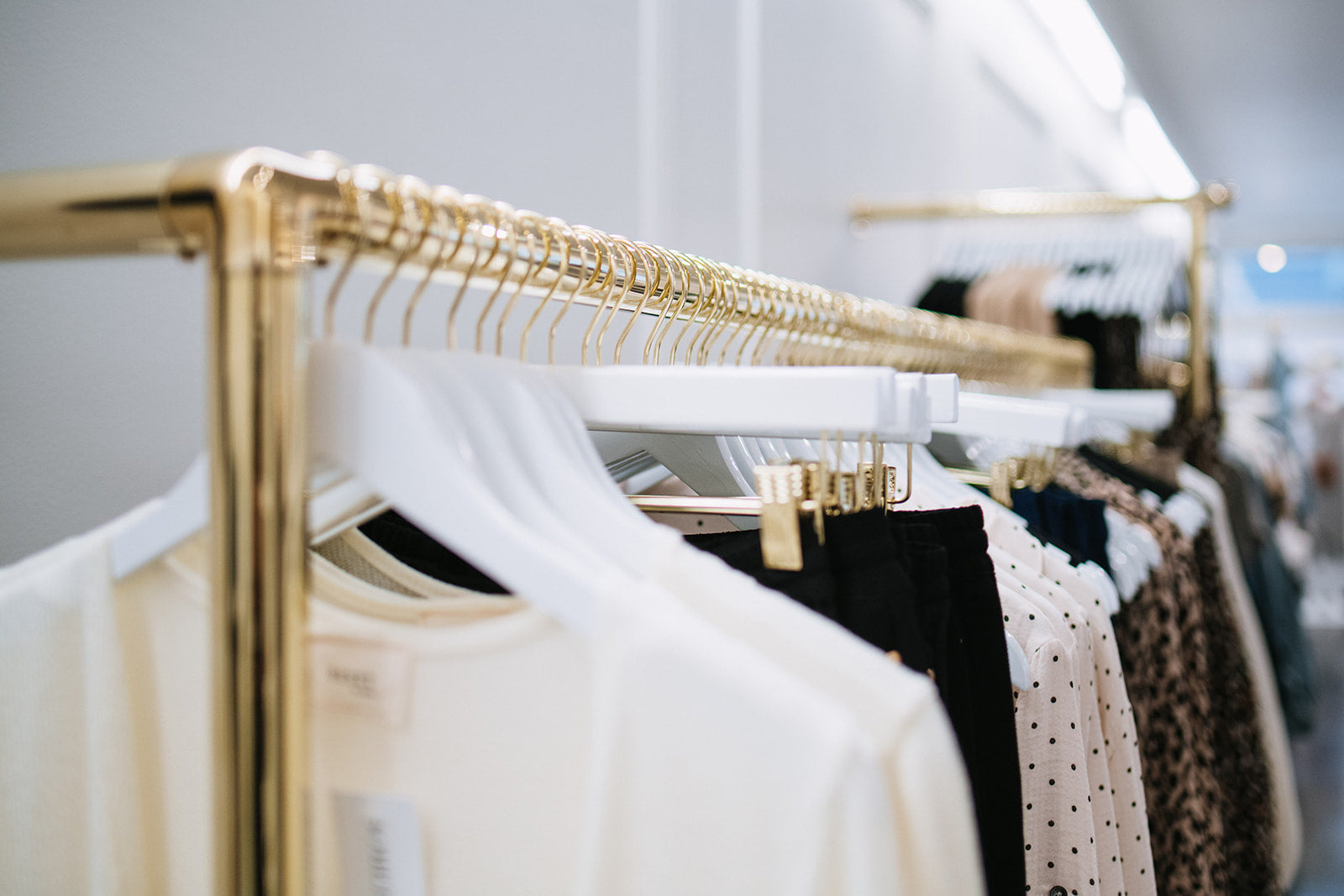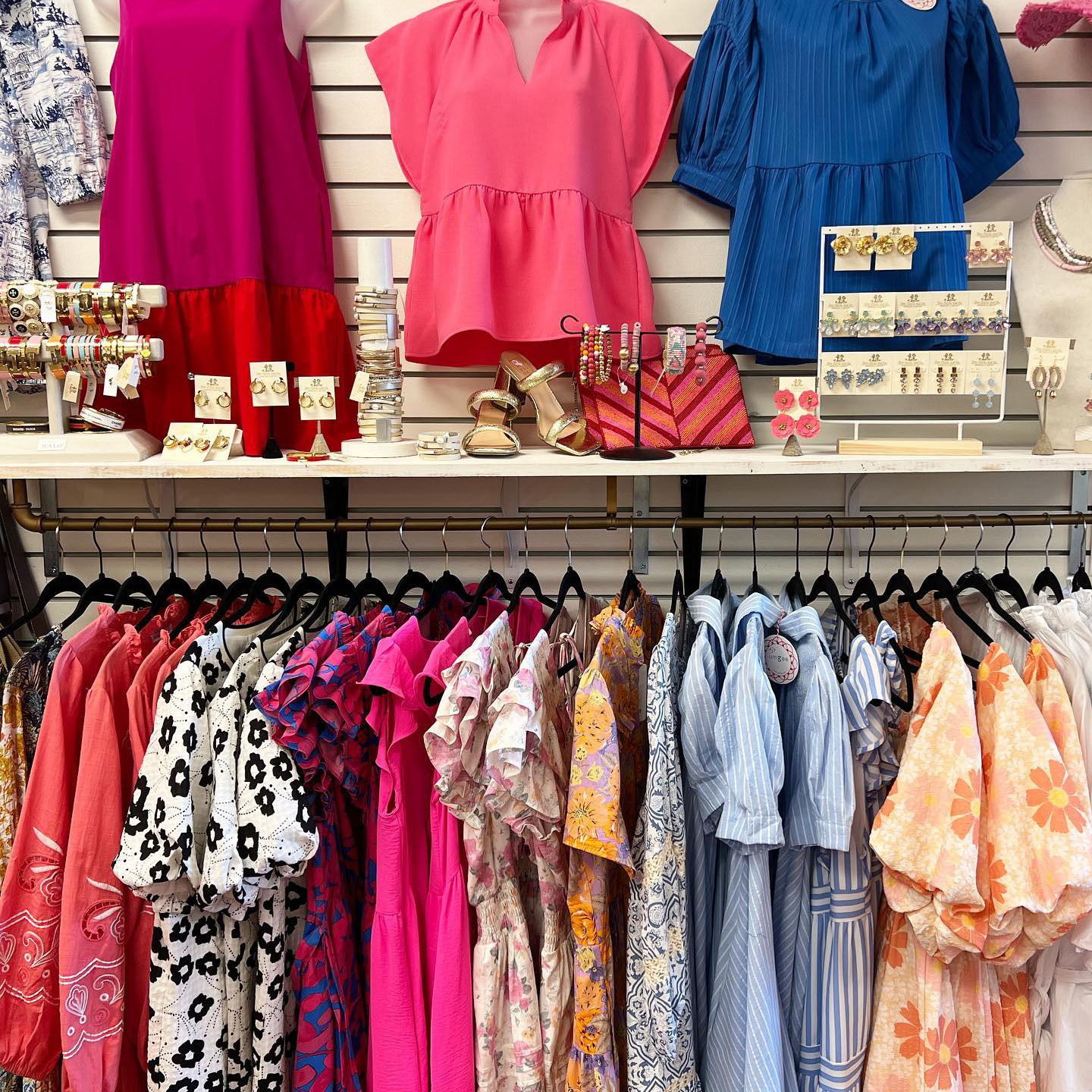Why Boutique Fashion is the Ultimate Choice for Unique Design
Why Boutique Fashion is the Ultimate Choice for Unique Design
Blog Article
Lasting Fashion: Exactly How Eco-Friendly Apparel Is Forming the Future of Style
As the garment industry faces boosting examination over its ecological effect, the increase of lasting fashion provides a promising option that aligns design with ecological obligation. Employing innovative products such as plant-based materials and recycled fibers, along with innovative techniques like digital and 3D printing, developers are redefining what it implies to be fashionable in the contemporary age. Simultaneously, the growing popularity of upcycling and second hand culture is cultivating a shift towards a round economic situation. Yet, just how does this movement genuinely affect the future trajectory of fashion, and what obstacles lie ahead in its prevalent fostering?
Cutting-edge Lasting Materials
As the style industry grapples with its ecological impact, cutting-edge sustainable materials have arised as an important service for reducing eco-friendly footprints. These products not only decrease dependency on fossil fuels but likewise lessen damaging chemical usage and water intake.
In enhancement to plant-based materials, advancements in biofabrication have actually led to the growth of lab-grown fabrics. Mycelium leather, originated from mushroom roots, provides a versatile and naturally degradable option to animal leather. Its production leads to substantially lower carbon emissions and water use, making it a more lasting choice for designer looking for to line up with green techniques.
Recycled products are likewise gaining grip, with polyester made from recycled plastic containers standing for a substantial advancement. This development not just draws away plastic waste from seas and garbage dumps however likewise reduces power usage compared to producing virgin polyester. With each other, these products underscore the possibility for a much more sustainable style market, paving the means for eco mindful design and production.
Eco-Conscious Production
Structure on the technologies in lasting materials, the fashion business is also re-evaluating its production processes to further lower ecological influence. Trick strategies include lessening water intake, minimizing carbon emissions, and getting rid of hazardous chemicals. By embracing closed-loop systems, manufacturers intend to recycle water and power successfully, significantly lessening waste. The assimilation of sustainable energy resources, such as solar and wind power, into production centers better cuts dependence on nonrenewable fuel sources.
One more essential aspect is the decrease of poisonous chemicals typically utilized in dyeing and completing fabrics. Eco-conscious suppliers are changing in the direction of plant-based dyes and waterless dyeing technologies, which not only protect neighborhood communities yet likewise boost employee security. Technologies like digital printing minimize material waste and energy usage, supplying a cleaner alternative to standard methods.
With the development of blockchain modern technology, business can currently give thorough understandings right into their supply chains, making certain moral and ecologically friendly techniques at each step. As the need for eco-conscious items grows, manufacturers are compelled to introduce, ensuring that the future of fashion is both sustainable and trendy.
The Rise of Upcycling
Upcycling, a transformative method in sustainable style, involves artistically repurposing discarded materials right into brand-new, high-quality products. This innovative method not just decreases waste yet likewise reduces the demand for resources, consequently minimizing the ecological influence of clothing manufacturing. By reconstructing and reimagining existing products, designers and style brands are able to infuse creativity into their collections while advertising ecological obligation.

In addition, the upcycling motion has actually equipped tiny organizations and independent developers, that frequently lead in technology due to their dexterity and creativity. By maximizing the abundant schedule of extra materials, these entities contribute to a circular economy, demonstrating that style can be both lasting and fashionable. Via upcycling, the sector takes considerable strides towards a much more accountable and mindful future.
Thrift Society's Effect
The blossoming second hand society dramatically improves the landscape of sustainable style, emphasizing the importance of conscious usage. This cultural change urges customers to accept previously owned apparel, thereby decreasing the need for new garment manufacturing and minimizing ecological impact. Second hand purchasing not only prolongs the lifecycle of clothing however likewise lowers click here to find out more the carbon impact related to manufacturing, delivering, and getting rid of clothing.
A key facet of second hand culture is its democratization of fashion. By supplying a wide selection of designs from different periods at budget-friendly costs, thrift stores make style obtainable to a wider audience. This availability promotes a sense of individuality and imagination, as customers mix and suit one-of-a-kind items to curate personalized closets without adding to the rapid style cycle.
In addition, thrift culture advertises circularity in style, lining up with the concepts of a round economic situation. As even more developers and consumers accept thrift culture, the fashion market is forced to adjust, integrating lasting practices to fulfill the growing demand for eco-conscious choices.

Future Trends in Style
Fashion's advancement is progressively shaped by technological technologies and sustainability-driven campaigns. As consumers become extra ecologically mindful, the industry is reacting with groundbreaking improvements that redefine the future of style. One popular pattern is the rise of digital fashion, where online garments can be put on in augmented reality atmospheres, considerably minimizing material waste. This change not only deals with the digital-savvy consumer but additionally decreases the environmental footprint generally linked with garment production.
Additionally, the combination of blockchain modern technology offers new opportunities in openness and traceability, allowing customers to validate the sustainability qualifications of their apparel. boutique fashion. This guarantees accountability in supply chains and advertises ethical sourcing methods. 3D printing is yet one more innovation that assures to change making procedures by enabling on-demand production, thereby reducing Recommended Site excess supply and waste
As these technologies develop, they are poised to transform the style landscape, merging style with sustainability. The future of fashion, consequently, lies in a smooth mix of modern technology, technology, and environmental duty.
Conclusion
The makeover of the fashion market via sustainable techniques indicates a critical change towards ecological liability. The integration of ingenious materials, eco-conscious manufacturing methods, and the embracement of upcycling and second hand culture highlights a dedication to decreasing eco-friendly footprints. As these methods gain energy, they redefine the sector's narrative by focusing on honest and sustainable selections. This development not only lines up fashion with eco-friendly sustainability yet also establishes a precedent for future trends focused on duty and technology.
As the fashion industry faces increasing analysis over its ecological effect, the rise of sustainable style uses a promising option that lines up style with eco-friendly obligation.As the fashion sector grapples with its ecological impact, click here now ingenious lasting materials have arised as an essential option for minimizing eco-friendly impacts. Together, these materials highlight the capacity for a much more lasting fashion market, paving the means for ecologically aware layout and manufacturing.
Structure on the innovations in lasting materials, the style sector is likewise re-evaluating its manufacturing procedures to additionally minimize ecological effect. boutique fashion.Upcycling, a transformative method in lasting fashion, entails artistically repurposing disposed of products into brand-new, high-quality items
Report this page